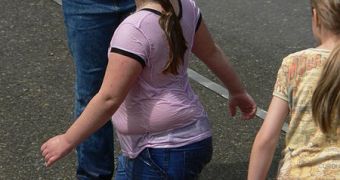In a new scientific study, specialists determined that a very clear correlation exists between the rates of obesity in children and their socioeconomic status, including the wealth level and affluence of the neighborhoods the young ones live in. The investigation was conducted on kids living in King County, Washington, by a group of investigators from the Seattle Children's Research Institute, the University of Washington (UW), and the Group Health Research Institute, PhysOrg reports.
Neighborhoods that were at a social disadvantage from others were therefore found to contain the highest number of overweight or obese children. "What we found confirms that it takes a village to raise a child. Children are raised not only at home but also in their community,” explains the new results expert H. Mollie Greves Grow, MD MPH. She is the lead author of a new study detailing the findings, which appears in the latest online issue of the journal Social Science & Medicine, where it's published ahead of print. The expert holds joint appointments as an assistant professor of pediatrics at the UW, Seattle Children's, and the Harborview Medical Center.
Other socioeconomic factors that were found to play an important role in the overall incidence of obesity cases included the level of education women in the area had, the number of parents in the household (none, one or two), median household income, as well as test subjects' ethnicity and race. Across all the neighborhoods the group looked at, these factors were found to influence as much as 24 percent of the variability in childhood obesity rates, the team informs.
“Childhood obesity is not just a family problem, but a larger community and societal problem. A disadvantaged environment can set families up for ill health, and it's unfair to blame them for not taking enough 'personal responsibility' to manage their weight. We don't yet know all of the factors that may create disadvantage, but we know it is present and associated with higher obesity. We were a little surprised that each of the census tract factors we included appeared to contribute, in a slightly different way, to the likelihood of childhood obesity,” Grow explains.
“I have seen some resilient families beat the odds by boosting their children's health despite their environment, and I hope to help other families do the same. Still, even more health gains would come from narrowing the inequality gaps that have been widening between rich and poor in this country. We should strive for all families to have access to walkable neighborhoods, safe parks, healthy grocery store options, and active schools. Tax dollars, voters, community planners, builders, and green spaces can all help make an impact,” she concludes.

 14 DAY TRIAL //
14 DAY TRIAL //